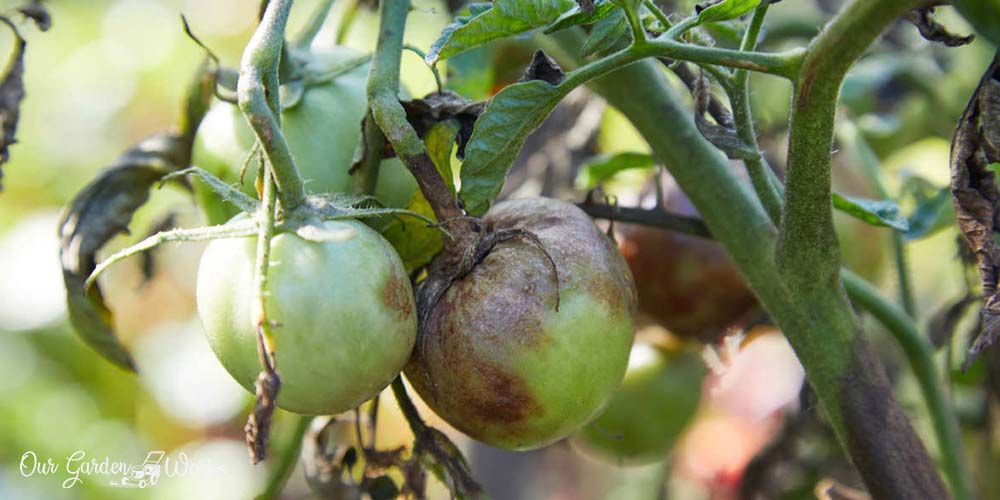The juiciness of tomatoes makes them a magnet for various pests and fungal diseases. Tomato blights are one of the fungal diseases that can wreak havoc on your tomato plants as they start to bear fruits.
If you want to have an organic approach in defending your plants against these plant diseases, several tomato blight recipes might do the trick.
In this post, we’ll discuss how tomato blight affects your tomato plants and some homemade fungicide spray recipes to use to treat it.
You might not even need to buy commercial pesticides at all with concoctions made up of ingredients available at home.
(You could use the table of contents below to jump to the sections that are most important to you.)
What is Tomato Blight?
Tomato blight is a fungal disease common in potatoes and tomatoes that thrives in wet conditions. They spread through spores that will start to rot and kill the tomato plant and its fruits.
In the US, there is an estimated economic loss of $287.8 million every year due to tomato blight.
Moisture helps the fungal disease to develop and spread. So, rain and wet surfaces make it spread faster.
Usually, the lower leaves of the plant catch the splashes of water with blight spores and show early signs of the disease. Insects that come in contact with the disease-infected soil can also spread the virus.
Types of Tomato Blight
Before heading to the fungicide recipes, it’s worth checking what type of fungal disease you’re eliminating. The symptoms vary depending on the type of blight that infected your tomato plants.
There are three types of blight that damage tomatoes and potatoes which includes:
1. Early Blight
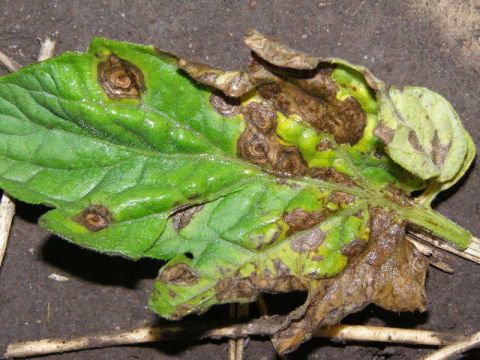
A common headache of tomato farmers occurs almost every growing season. It is caused by two types of pathogens namely, Alternaria Tomatophila ( A. Tomatophila) and Alternaria Solani (A. Solani).
It spreads through the wind, contact with contaminated water and surfaces and carrier-insects.
Ideal environment:
- Moderate to warm weather
- High-humidity
- Rainy weather
Signs & Symptoms:
- Small dark spots on the leaves. Big dark spots look like targets and surrounded by yellow edges.
- Stems near the soil turned brown, infected, and start to rot.
- Fruits will have brown spots with a leathery surface.
- Severely infected leaves and fruit fall to the ground.
2. Late Blight
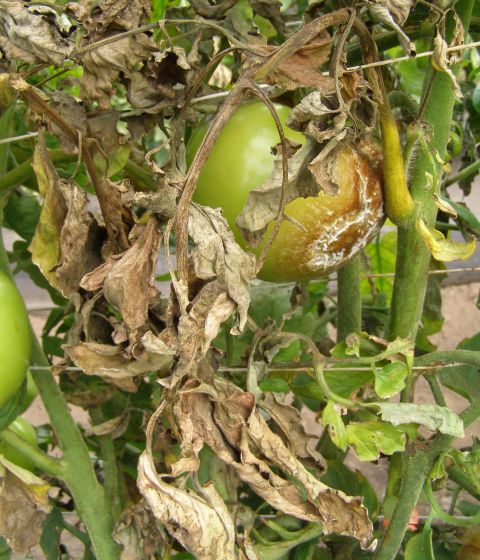
A fast-spreading plant disease that has caused major famine in the early centuries. It is caused by the oomycete Phytophthora infestans which is more of a mold than fungi.
It spreads through the wind and contaminated seed tubers and transplants. If left untreated it can kill an entire field of tomatoes in five days.
Given the right weather condition, Phytophthora infestans can reproduce with thousands of sporangia that increase the spread of this plant disease.
Ideal environment:
- A cool and damp environment
Signs & Symptoms:
- Leaves have big brown and dry blotches.
- Infected stems have circular dark brown blotches.
- Has white powdery molds on leaves, stems, and fruits.
- The rapid spread of the signs throughout the tomato field.
3. Septoria Blight
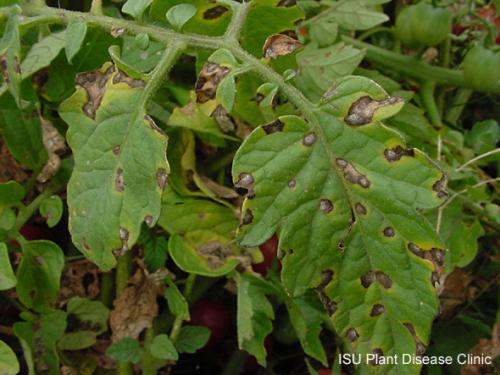
A fungal disease is rampant in wet weather conditions. It is caused by the pathogen Septoria Lycopersici.
Septoria blight stays on plant debris, contaminates, and overwinters in the soil. It is spread by water splashes and contact with contaminated materials from the soil It is spread almost the same as early blight.
Ideal environment:
- Warm and humid weather condition
Signs & Symptoms:
- Small brown spots with white spots in the middle on the leaves near the soil. As the disease progresses the leaves turn brown, dries up, and die.
- The infected fruit may also show small lesions.
More and more gardeners are now choosing to use organic materials as our environment continues to suffer from the harsh chemicals in various industries.
Now, let head to the solution on how to treat these tomato blights with homemade materials available at home.
You might like: 10 Best Fungicides For Tomatoes of 2021 – Reviews & Top Picks
9 Best Tomato Blight Recipes That You Can Do At Home
We listed 9 recipes using various household items so you can use anything on our list that’s available in your home.
DIY fungicides are as follows:
1. Baking soda + Dish soap
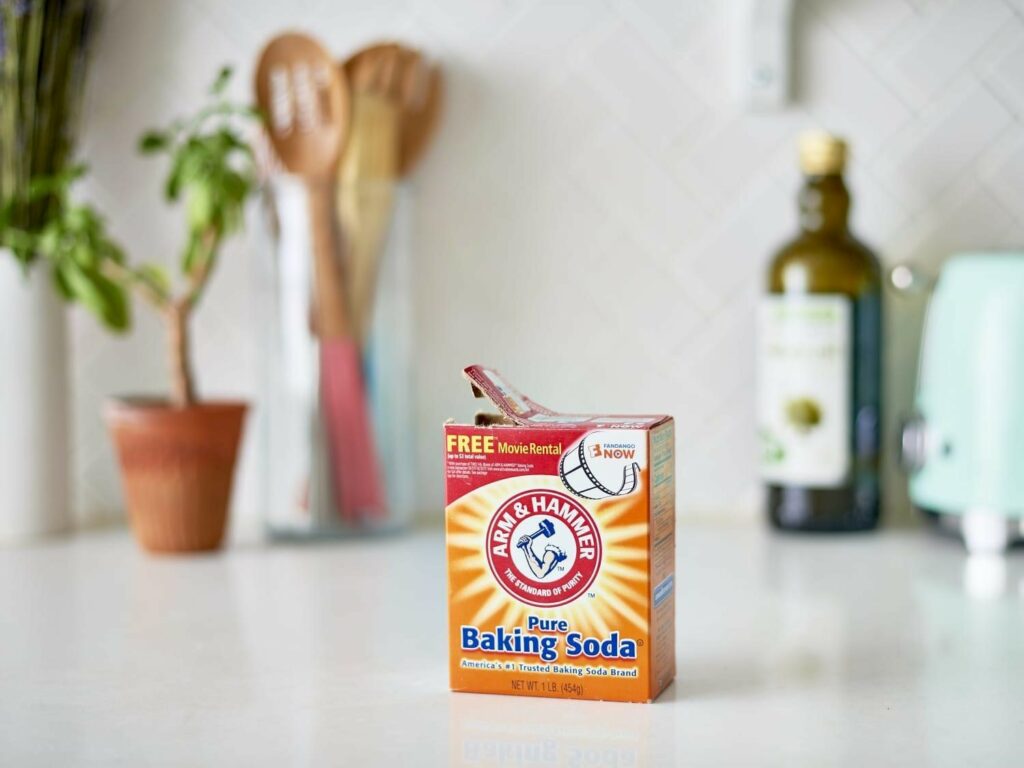
This solution is by far, the most widely used fungicide for tomatoes. It’s eco-friendly and contains materials that are always available in any household.
Here are the materials you’ll need:
- 1 tbsp. baking soda
- 2 drops of dish soap
- 1 gallon of water
- 2 tbsp. vegetable oil
Procedure:
- Prepare a gallon of water in a mixing bucket and mix the baking soda.
- Add the vegetable oil and mix well.
- Finally, add two drops of dish soap. Mix until all ingredients are dissolved. Make sure you’re using eco-friendly dish soap for this solution.
- Transfer the solution to a spray container.
2. Pepper + Garlic + Lemon juice
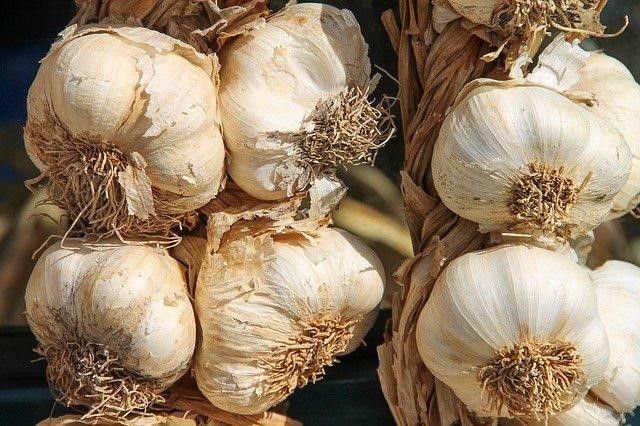
Combining the intense smell of garlic, flavors of pepper, and acid of lemon juice creates a powerful DIY fungicide against plant diseases.
Since these are almost available in any kitchen, they can be a good addition to your DIY solution for stubborn fungal diseases.
Here are the materials you’ll need:
- 1 bulb of garlic crushed
- 1 tbsp. Canola oil
- 1 tbsp. Crushed peppers
- 1 tbsp. Lemon juice
- 1 bottle of water
Procedure:
- Prepare a bottle of water with ¾ water with cover.
- Mix the crushed garlic water and crushed peppers.
- Add the canola oil and lemon juice.
- Let it sit overnight.
- Use this solution as a concentrate and only use 4 tbsp. For every gallon of water.
3. Hydrogen Peroxide + Liquid copper
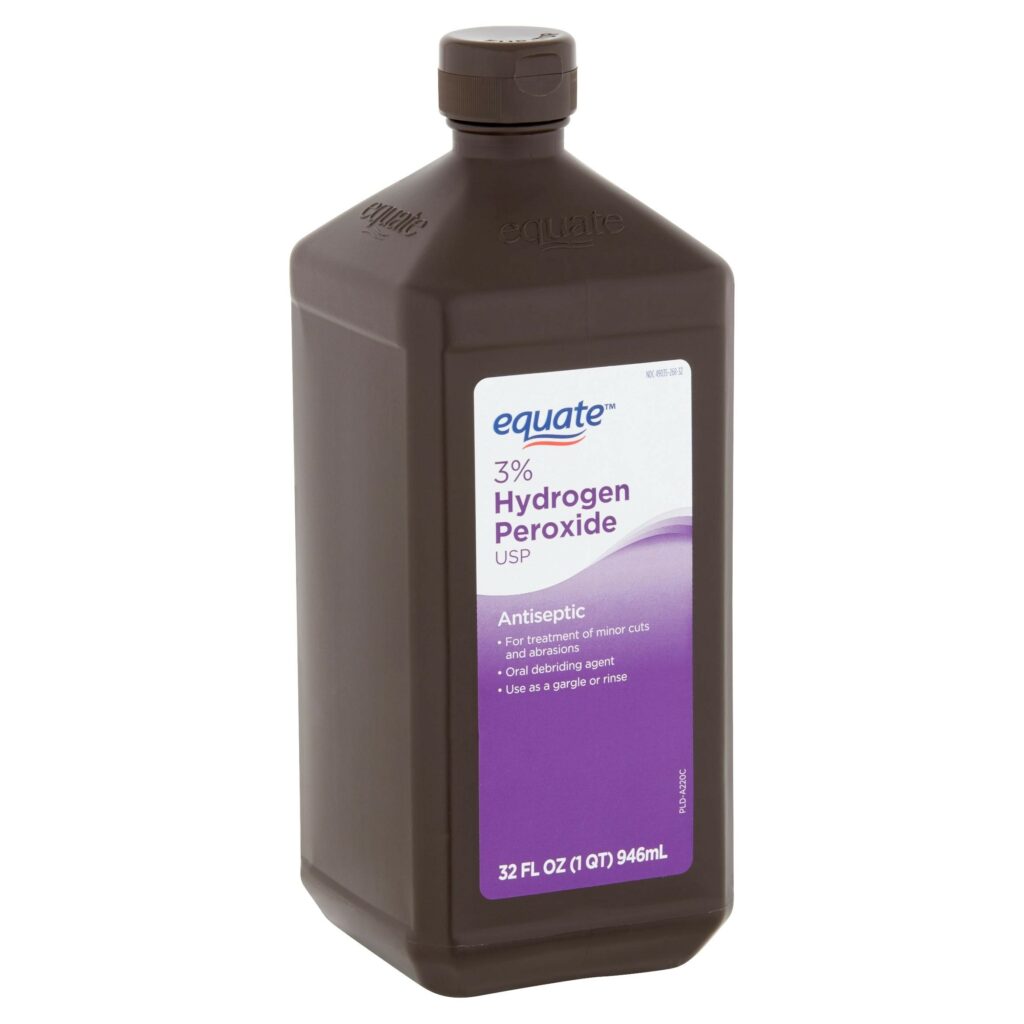
A more rigorous approach includes the combination of two DIY fungicides for treating stubborn tomato blights.
Copper can kill bacteria in contact and using it consequently with another DIY fungicide will help keep the fungal diseases at bay.
Here are the materials you’ll need:
- 6 tbsps. Hydrogen peroxide
- 4 tsp. Liquid copper
- 2 gallons of water in a separate mixing container
- 2 spray bottles
Procedure:
- Mix 6 tbsps. hydrogen peroxide with 1 gallon of water and transfer it to a spray bottle This will serve as the killing agent for the blight.
- Mix 4 tsp. Liquid copper with 1 gallon of water and transfer it to a spray bottle. This will serve as the prevention spray to prevent the blight from reoccurring.
- Prune and remove infected leaves, stems, and fruits.
- Apply the peroxide spray for two nights.
- On the third night, apply the copper spray and let it sit for 2 days.
- Reapply peroxide spray and apply copper the next night and let it sit for 4 days.
- Lastly, apply peroxide spray.
4. Asprin

Another new addition to DIY fungicides is the aspirin solution. All you have to do is mix 1 crushed aspirin with 4 cups of water and mix it well. Transfer the solution to a spray bottle and use it every 2-3 weeks.
5. Tea Tree Oil
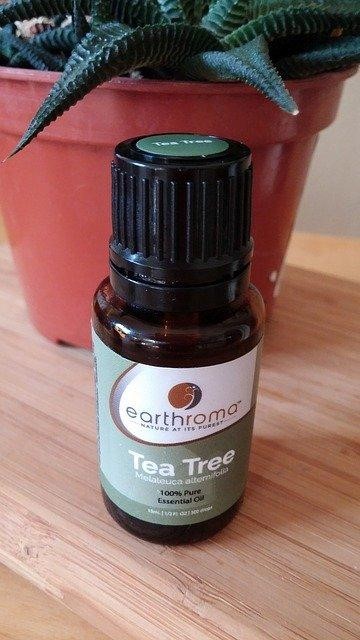
If you’re a fan of essential oils, you will appreciate them more since you can also use them for your plants.
Here are the materials you’ll need:
- 2 tbsps.Tea tree oil
- 2 cups of water
- 1 spray bottle
Procedure:
- Mix 2 tbsps. tea tree oil with water.
- Transfer the solution to a bottle and use it on your tomatoes every 3 to 7 days.
6. Chrysanthemum or Pyrethrin Flower Soak Solution

Pyrethrin is a botanical insecticide derived from the chrysanthemum flower. So, if you have chrysanthemum in your garden, you may also use it as a fungicide.
Here are the materials you’ll need:
- 1 cup of chrysanthemum flower heads
- ⅛ cup 70% isopropyl alcohol
- 4 quarts water
Procedure:
- Mix the chrysanthemum flowers and alcohol and store them overnight in an airtight container. The alcohol will help squeeze out the pyrethrin chemicals from the flowers.
- The next day, filter the flowers and transfer the solution to an airtight bottle.
- Mix the extract with 4 quarts of water and use accordingly.
7. Bordeaux Mix
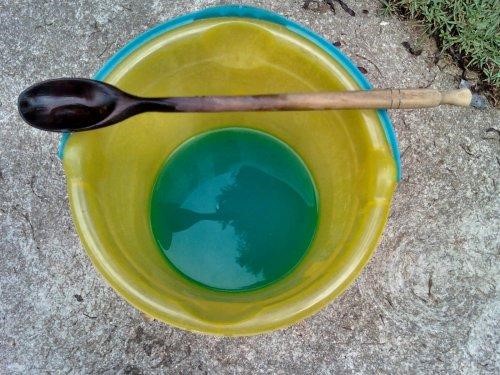
Bordeaux mix is a mixture of copper sulfate and lime used as a fungicide in vineyards and other fruit farms.
Here are the materials you’ll need:
- 50 ml. copper sulfate diluted in water
- 148 ml. Slaked lime diluted in water
- 1 gallon of water
- Dust mask
Procedure:
- Wear a dust mask.
- Mix 1 lb. of copper sulfate with 1 gallon of water and set it aside in an airtight container.
- Mix 1 lb. of slaked lime in 1 gallon of water and let the two solutions for 2 to 3 hours.
- Prepare a mixing container and put 20 ml of copper sulfate solution from the airtight container.
- Add 148 ml. Slaked lime solution and mix well. Use it on the same day you mixed the solutions.
Reminder: The solution is highly corrosive so clean your working area and rinse the solution residue on the bottle with water.
8. Vinegar Solution

Vinegar has always been the most reliable condiment that serves a lot of purposes, in cooking, cleaning, and even as a fungicide.
To use it as a fungicide, mix 3 tsp. of apple cider vinegar with 1 gallon of water and transfer the diluted solution to a spray bottle. The acetic acid will help fight the fungus on your tomato plants.
9. Compost Tea
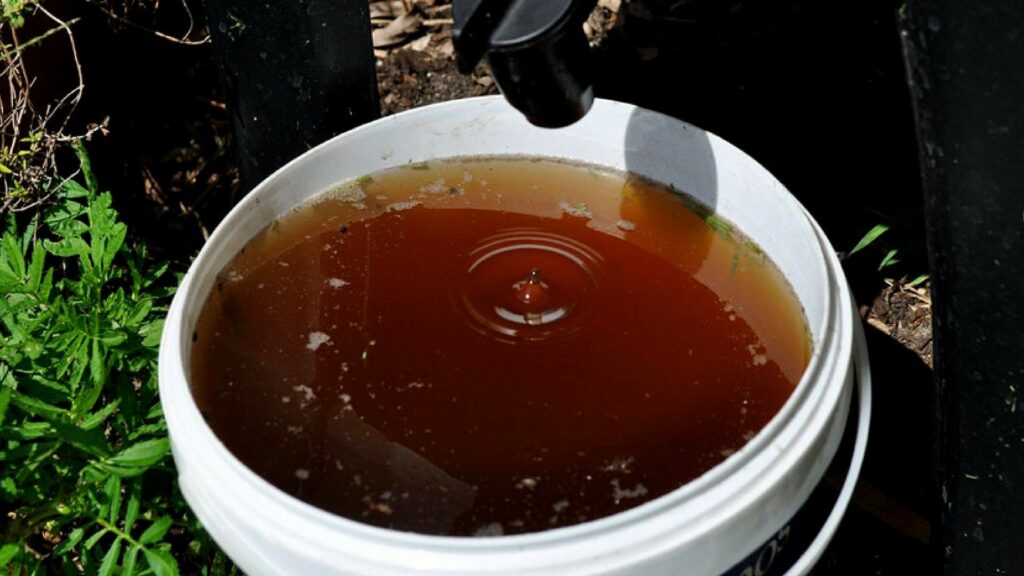
Another well-known fungicide is a compost tea that is packed with healthy microorganisms that will fight plant diseases.
For this solution use worm compost and avoid using compost with animal manure to avoid the spread of e. Coli.
Here are the materials you’ll need:
- 4 cups of worm compost
- 5 gallons of water
Procedure:
- Steep the worm compost in 5 gallons of water in a covered container.
- Let it sit for 5 days and keep it away from sunlight to preserve the microbes.
- Once done, use it within four hours.
Tips In Applying Tomato Blight Solutions
There are several recipes that have been used for years in fighting plant diseases in tomatoes.
Early stages of blight should be observed as soon as possible to save your tomatoes. Otherwise, it might be too late and blight might already be attacking the rest of your crops.
It’s essential to observe and inspect your tomatoes frequently during the growing season to ensure you’ll have a bountiful harvest.
Here are some tips for applying fungicides to your tomatoes:
- Fungal diseases can be transferred through contact so make sure to wash your pruning shears, gloves, and other gardening tools before using them on other plants.
- Wear a mask when handling chemicals like lime and liquid copper.
- Always label the solutions you made, to avoid confusing other family members of its contents.
- Apply fungicide in the late afternoon or at dawn to prevent burning your plants.
- Test patch the solution on a few leaves before applying the solution to all of your plants to make sure they can handle the strength of the solution.
- Clear out infected parts and make sure to dispose of them properly to avoid spreading the disease to other plants.
- Always check the label of the products you’re about to use. Otherwise, the concentration of chemicals might too strong for your plants and do more harm than good. Prefer to use organic products if available.
Final Thoughts
Tomato blights are the most damaging plant diseases across the globe. They thrive in different weather conditions and can spread through the wind.
However, early detection and rigorous control measures may help your tomato plants survive these devastating plant diseases.
We hope that you found the tomato blight recipes that will work for your tomato plants.
If you find some of our recipes effective in fighting off tomato blights, share them with your friends and help them save their crops too.
Which tomato blight recipe worked for your plants?
Let us know in the comments below and help boost the confidence of other gardeners in fighting these diseases.
